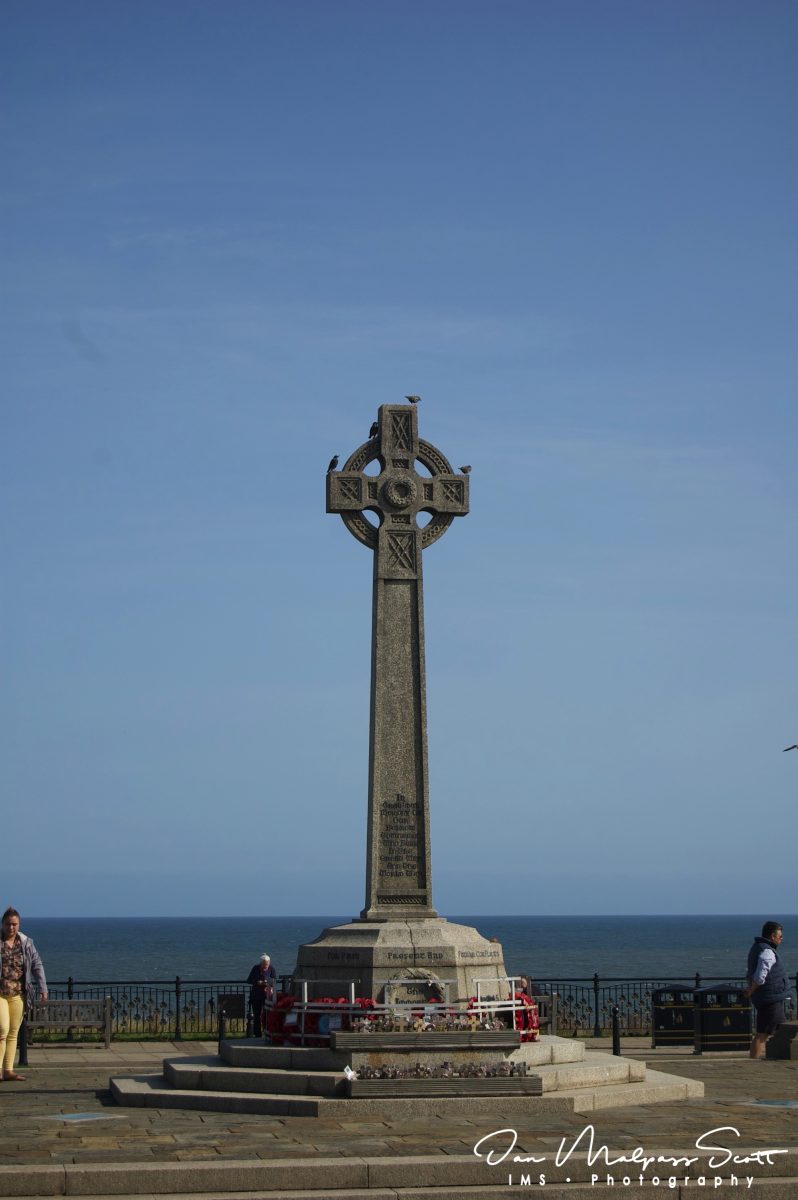The beach at Seaham, Co. Durham.
First World War memorial designed by Mr TA Lawson, unveiled 1922, with later additions for the Second World War.
Reasons for Designation
Seaham War Memorial, which stands on Terrace Green, is listed at Grade II for the following principal reasons: * Historic interest: as an eloquent witness to the tragic impact of world events on this local community, and the sacrifice it has made in the conflicts of the C20; * Architectural interest: an imposing memorial cross in the Celtic style, ornamented with carved interlace patterns; * Group value: with the Police Station and the Statue Of The 6th Marquess Of Londonderry In Front Of Police Station (both Grade II-listed).
History
The aftermath of the First World War saw the biggest single wave of public commemoration ever with tens of thousands of memorials erected across England. This was the result of both the huge impact on communities of the loss of three quarters of a million British lives, and also the official policy of not repatriating the dead: therefore the memorials provided the main focus of the grief felt at this great loss. One such memorial was raised at Seaham as a permanent testament to the sacrifice made by the members of the local community who lost their lives in the First World War.
The memorial was unveiled on 20 August 1922 by the Marquis of Londonderry, and dedicated by the vicar, Canon Colling. It commemorates some 400 local servicemen who died in the First World War. The memorial cost £1,200. It was designed by Mr TA Lawson, of Seaham Urban District Council and built by McMillan and Sons of Sunderland. Following the Second World War the dedication was amended to include the dates of that conflict.
Details
First World War memorial designed by Mr TA Lawson, unveiled 1922.
The memorial stands at the centre of Terrace Green, overlooking the sea to the east and in close proximity to the Police Station and the statue of the Marquis of Londonderry (both Grade II-listed). In Cornish granite and c9m tall, it takes the form of a Celtic cross with interlace patterns carved in relief on the wheel-head. The cross shaft rises from an octagonal drum-like pedestal, which stands on a three-stepped base. The pedestal has wreaths carved in low relief to four opposing sides. A metal rail encloses the pedestal in order to hold wreaths. The whole stands on a broad two-stepped platform, which has low Heworth stone piers at each corner.
The principal dedicatory inscription is recorded on the inland-facing side of the cross shaft, reading IN/ GRATEFUL/ MEMORY OF/ OUR/ FELLOW/ TOWNSMEN/ WHO FELL/ IN THE/ GREAT WAR/ AND THE/ WORLD WAR. Additional inscriptions on the pedestal include THE/ IMMORTAL/ DEAD enclosed by each carved wreath and the dates 1914 – 1918 1939 – 1945 on the remaining landward faces.
This List entry has been amended to add sources for War Memorials Online and the War Memorials Register. These sources were not used in the compilation of this List entry but are added here as a guide for further reading, 22 February 2017.


